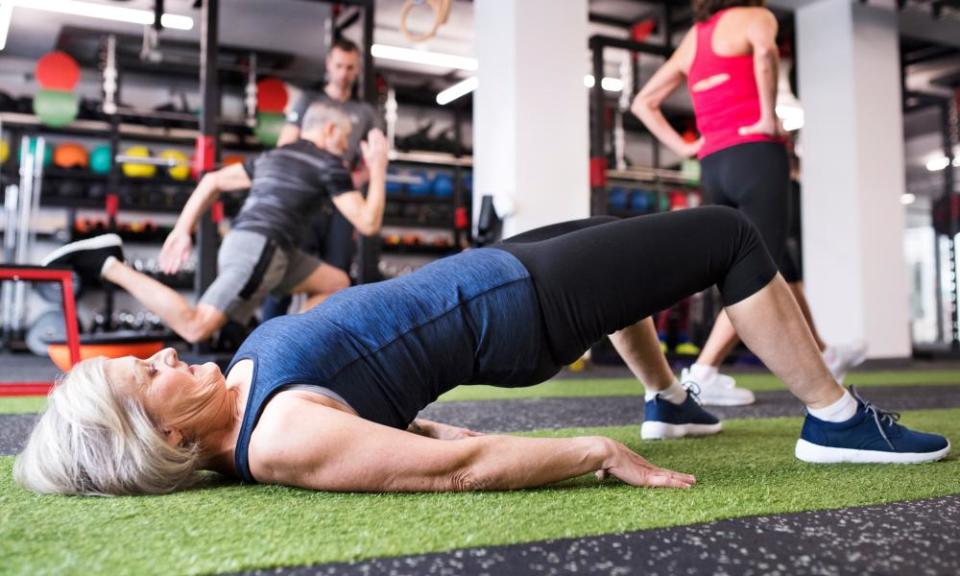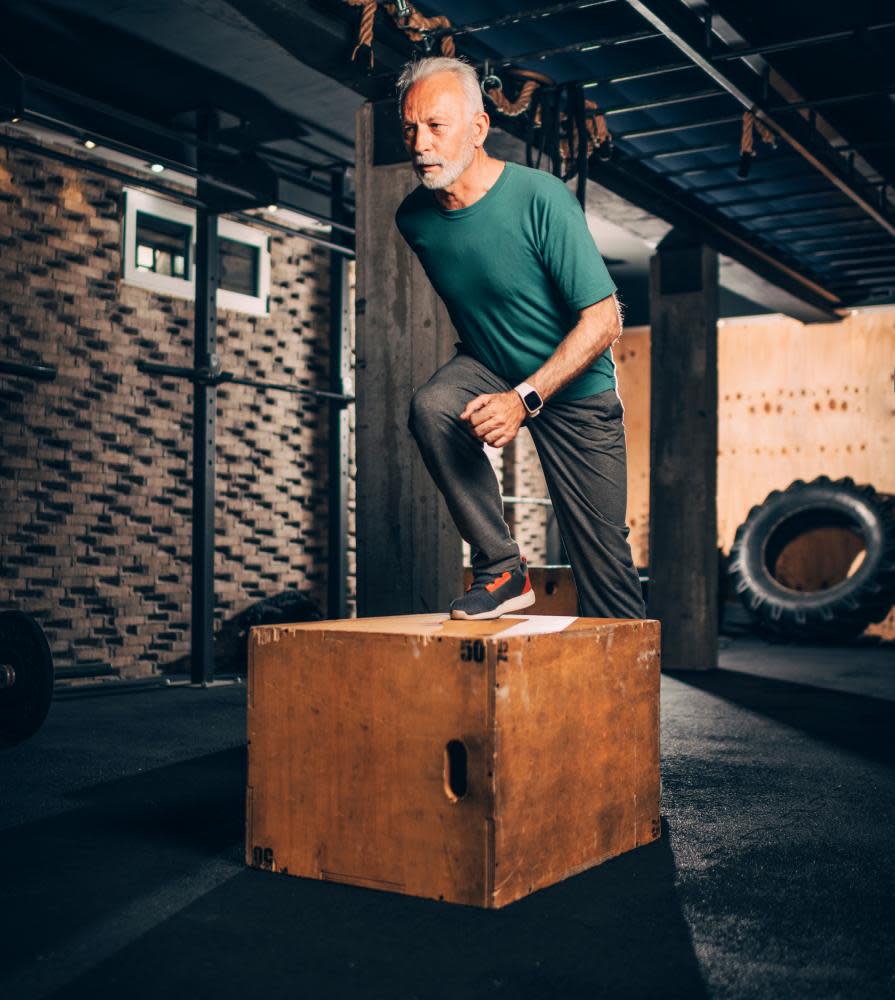Physiotherapists on the functional exercises everyone should do from home (and they do themselves)

For the sake of our physical and mental health, GPs recommend that we exercise five times per week. But there can be more to think about than just getting our heart rate up – physiotherapists say it also pays to work on strengthening our muscles.
Related: An apple a day? Four GPs on the top health advice they give and follow
Why? For one, says physiotherapist Tristan Chai, having more muscle mass in our body helps with overall health. But we also need our muscles to be strong so that we don’t end up absorbing the impact of movement in the wrong places – an easy way to wind up with an injury or chronic pain.
“So if I’ve got really weak quads and glutes, if I go for a run, I’m going to use a lot of my calves. I’ll probably be a bit sloppy with my running and end up absorbing more impact through my hip and knee joints,” Chai explains. “So you want those muscles to be strong to support joints and also to optimise your movements.”
The good news is incorporating strength exercises into your routine doesn’t have to be complicated (or even involve leaving your house). To find out where to start, we asked four physios to tell us about the functional exercises they think everyone should be doing and that they make time to do themselves.
Of course, every body is different, especially if you’ve got existing injuries, so if you’ve had issues in the past, make sure to seek out specific advise before attempting a new exercise or regimen.
Step-ups

“The step-up is a great all-round exercise for the lower body,” says Michael Gilbert of Active Answers Physiotherapy in Sydney. “It’s perfect for all fitness and strength levels and has a low risk of injury.”
Gilbert says regular step-ups will increase your quad and glute strength, which helps to protect your knee and hip joints. Doing one is as simple as stepping from the floor on to a bench or plyo box.
“The great thing about the step-up is it strengthens each leg individually, which can help to build muscles equally on both sides,” he adds. “Having better strength will also increase your balance, and then ultimately the stronger you are, the less injured you’re going to get and the lower the risk of falling will be.”
It’s an exercise he personally vouches for: “I do it probably a few times a week in the gym with weights above my head to get the core working,” Gilbert says. But if you’re just starting out, he recommends using your bodyweight only and aiming for three sets of eight to 10 reps. You can add weight or increase your step size later on.
Bridge
“A basic bridge is where you lay on your back with your knees bent and feet flat, you squeeze your butt-cheeks and you lift your butt up off the floor,” explains Melissa Haberfield, a researcher, lecturer and physio to the North Melbourne Football Club AFLW team.
A bridge targets our glutes, which helps with running or jumping sports. But Haberfield says there’s also “really good evidence” they can help with lower back, knee and hip pain.
“The reason that I really love it is because it’s something I use in clinical practice all the time. You can basically apply it to anyone in any circumstance. I’ll use it for a patient who has severe back pain or chronic back pain; we can regress it and make it really easy. But then at the same time, I’ll use it with one of my AFLW girls and make it harder by putting their shoulders on a bench so that they’re elevated.”
And yes, she says, “I definitely do bridges myself.”
Calf raise
Ebonie Rio from La Trobe University and the Victorian Institute of Sport says calf strength is “incredibly important” and can help protect us from injury.
“If you’re landing from a jump, they absorb most of the energy,” she explains. “So if your calf muscles aren’t very good, those forces will go somewhere else. They’ll go to your knee joint, or your hip joint, or your lower back.” Rio says calf strength also protects the bones in our feet and our Achilles tendon when we do things like step off curbs. “You need really good calf strength throughout your whole life, not just if you’re an athlete,” she says.

To that end, Rio advocates for the calf raise, which involves standing up straight, pushing through the balls of your feet and raising your heel until you’re standing on your toes. If you want, you can hold on to a wall for balance.
Rio says she does calf raises every second night. “I’ve taken up running during Covid, so I do them on my non-running day to be nice and strong and prevent any injury. That also means my calf muscles have recovered overnight before I have to be on my feet the next day, so they’re not tired when I’m walking around.”
Single leg sit to stand
If you’re sitting down right now, try standing up using only one leg. That’s a single leg sit to stand, a go-to exercise for Tristan Chai from Good Physio in Glenelg, Adelaide.
“I like it because it’s a functional exercise,” he says. “We all have to get from sitting to standing, so it’s super-relevant to day-to-day life.”
Related: A beginner's guide to running: 10 quick tips
Chai says single leg sit to stands are good for all lower-limb strength, especially the glutes and quads. “I give it to runners a lot because they’re always on one leg when they’re striding. It helps control their hip and knee to prevent overuse injuries,” he says.
“I also give it a lot to older people who just generally want to be a bit stronger through their legs, if they’re feeling a bit shaky or weak or have a history of falls. I find this one an easy one to do, because there’s a chair behind you. So if you can’t do it, you just go back to sitting down again safely.”
Chai says he does the exercise three times a week. “I’m a bit of a runner so it just keeps everything activated,” he says. “But if you’re an older person who’s not doing lots of other forms of exercise, you could definitely do this every day. It’s not too strenuous that you need a day’s break in between.”

 Yahoo News
Yahoo News 